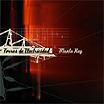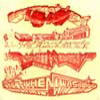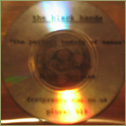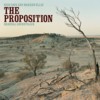- Administrator
- Albums and Singles
 Bubbles is justwhat I had hoped for this collaboration, only a debut in the most officialsense as Allien and Sascha Ring (Apparat) have been working together and sideby side for several years, on remixes, each other’s records, and helping runtwo of Berlin’s best label’s, Bpitch Control and Shitkatapult. I’ve heard both artists evolve over the pastfive years and become more similar in sound.
Bubbles is justwhat I had hoped for this collaboration, only a debut in the most officialsense as Allien and Sascha Ring (Apparat) have been working together and sideby side for several years, on remixes, each other’s records, and helping runtwo of Berlin’s best label’s, Bpitch Control and Shitkatapult. I’ve heard both artists evolve over the pastfive years and become more similar in sound.Apparat began with the surprisingly solid, if busy andWarp-nostalgic IDM of early 12” singles like “Multifunktionsebene,” moving latertowards a beautiful synthesis of his stark beat-mastery and newer melancholygenerated by real horns and vocals (see 2002’s numbing “Pressure”). Ring’s healthy obsession with computermalfunction, coming out in his song titles (“Warm Signal,” “Bugs and Fixes”),references his heavy use of frantic IDM breaks and glitch, but differs fromAutechre’s or Aphex’s tech-babble in the humanity and humorous nostalgia of itspresentation. For me, the craggy,sculpted beats of an Apparat track, for all of their continually impressivetechnical ability, always seemed little more than the foil for the granular,melodic washes underneath, the most derivative and predictably sentimentalparts, but also the most grabbing. Itwas as if Ring were trying for these moments of simple emotional suspension,but felt the need to brace it all behind flashy geometry.
The biggest redirection in Allien’s history thusfar has beenthe introduction of the glitch, or ‘micro-processed’ aesthetic, arrivingalongside her most explicit flirtation with the pop format on 2003’s Berlinette. It’s still her most intricately ‘tweaked’record, the one most adaptable to any listening situation because there is somuch sonic interaction to scatter attention, and also the one with the mostpersonality, nostalgia, and similarity to the technically-obsessed music ofApparat. Allien backed away considerablywith last year’s Thrills, an albumthat seems to me now, rather than the ‘album’ albums of Berlinette and Bubbles,more like of an experimentation with style, an admittedly addictive opportunityfor Ellen to fully indulge Berlinette’shidden borrowings from classic and dated techno, trance, and even industrialtracks in efforts not to revive but to recreate with a Bpitch logo: broad-stroked,coarsely homemade, but also supercool in both technical ability and relevancyof mood.
On their new collaboration, Allien and Ring combine thedetail-orientedness and mood-primacy of late Apparat and Berlinette with the party-borrowing mood of Thrills. There are severalvocal tracks, mining the ambient techno/IDM/indietronic vibe found on Apparat’s2003 album Duplex or a Múm or Morrlabel record, but there’s also a great track in the grime style (“Metric”),some spacey, just-subtle-enough electro tracks, and songs like “Retina,” basedon live-sounding string loops and pinging, bubbling electronic noise; songswhere you can hear the insistence of the minimal melodic parts Allien does sowell, meshing beautifully with Ring’s rhythmic abstractions. The blatant trance-y melodic parts, thedistorted guitar chugging, the acidic bass parts that appeared on Berlinette and Thrills are here again in gorgeous subtle integration, an ease reflectedin the album sequencing. Bubbles is simply an immediatelyinvolving, fresh sounding song cycle of electronica, old and brand new, that’sgetting better with each half and full listen. My one qualm exists with the vocal parts which are a littledisappointing probably only in that I’m so accustomed and addicted thespeak-singing method Allien primarily uses. The new, slower and more fragile timbre of her voice suites the ambienttechno-styled tunes it accompanies, just not my stubborn ear, yet. In consolation, I can say that Ring’s onevocal does sound better than those appearing on Duplex.
samples:
Read More
- Administrator
- Albums and Singles
 Nearly four years after crafting Playthroughs Keith Fullerton Whitman is finally returning to the sound that practically defined his place among the masters of experimental music. Working again with processed guitar, Whitman has modified the setup used to write Playthroughs and come away sounding fresh and exciting once more. This time around the music is more prodigious and towering than ever, a wall of incandescent guitars backed by the flicker of digital starlight.
Nearly four years after crafting Playthroughs Keith Fullerton Whitman is finally returning to the sound that practically defined his place among the masters of experimental music. Working again with processed guitar, Whitman has modified the setup used to write Playthroughs and come away sounding fresh and exciting once more. This time around the music is more prodigious and towering than ever, a wall of incandescent guitars backed by the flicker of digital starlight.Kranky
Lisbon was recorded live on stage at the Galeria Zé Dos Bois in October of 2005. Whitman has noted on the Kranky website that his typical attention to detail has been forgone in favor of letting the raw performance speak for itself. Whatever details he felt were in need of editing or re-working are unrecognizable to these ears, however. Lisbon shines with a candor and energy that makes a term like "flaw" seem superfluous, the result of a perspective that fails to acknowledge beauty in unexpected places. As the single, 40+ minute piece opens, Whitman immediately casts away the curtain of silence with a beaming ray of orchestral sheen. The effect isn't unlike hearing an orchestra warm up. After bringing the instruments up to power the embryonic playfulness condenses into a unified tone that washes back and forth, swaying lazily in the air. Whitman practically captures the movement of branches and leaves in a tree, his music the flow of air that forces their subtle, relaxing movements. Sounding like the call of insects, a series of high pitched tones in the background eventually work their way forward in the mix, adding a new dimension to the picture that Whitman slowly builds over the duration of Lisbon. Playthroughs was a majestic album to be sure, but in the first minutes of this composition Whitman paints a picture more vivid than anything else in his catalog. The instant he begins to introduce other electric sources and strange sounds his work flowers to life, cast in the light of a blooming spring-time panorama. Nothing is more attractive to me than an album that can capture such picturesque beauty so effortlessly.
Postcard serenity isn't a facet of Lisbon's sprawling resonance, however. Bright and sunny tones spill out over the record at times, but so does the racket of tempest-like noise. Splashes of static rain and heavy winds blow through the processed guitar nearly halfway through, sometimes overcoming the sunny disposition it expels and sometimes complimenting it. More and more sources are added to the mix, conjuring up the sense that a storm is on the horizon and then Whitman carefully deconstructs everything he's built up to this point. Imperial horns begin calling through the haze of sounds and they slowly fill the entire piece. A sense that there must be some shelter from the storm is immediately invoked by this addition. Before that promise of shelter can be secured, however, everything tunes down, slowly melts away underneath the fulguration of dying tones and dissolves into a revelation of distorted guitars, more recognizable than before. Whitman casts the entire composition into an abyss and picks it back up again to unveil a swirling pool of solos and fuzz-beyond-fuzz effects. The entire second half of Lisbon is a racket of buzzing saws, high pitched scratches, and the rumble of fallen timber. The piece slowly transforms from a droning titan into a stumbling drunk that's somehow found himself lost in a mess of cosmic proportions. Microcosmic sound shivers and splatters on the concrete, breaking reality in half and reconstructing it atom by atom. I always picture the final moments of Carl Sagan's Contact at this point, a flurry of cosmic events rushing by while the transport device is nearly torn to shreds.
Nothing on Lisbonever gets as out of control as that, however. Very few moments on therecord sound like moments of pure chaos; Whitman quickly pulls much ofhis material back together before the piece gets too out of hand. Whilethere does seem to be a bit of random sampling occurring towards theend of the album, Whitman uses it to great effect. Before allowing foranything structured or immediately recognizable as a melody toreappear, Whitman sends much of his material through a blender andallows the contents to spill out over the sides. Slowly, a shimmeringhint of light appears and the sounds of bird calls enters the piece.It's almost as if Whitman's performance was a demonstration of musicaldusk and dawn, a detailing of the process from one to the other. It'simpossible not to hear currents of life in the music, impossible not toaffiliate some of the futuristic tones with alien signs of life. Ipicture this music playing as the black monolith from 2001 appears on the surface of the moon; its a fitting picture because the monolith in that movie was simultaneously familiar and completely unidentifiable. It was a disturbing and attractive symbol that immediately cut its way in my mind, much like this album does. It seems uncommonly earthbound and unfalteringly universal as it pulses and warps its way through to its completion. The arc of this disc is essential to its power, the transformation it undergoes the essential element of its appeal. There are gorgeous momentslittered throughout, but there can be little questioning Whitman'sdecision to make this a single piece. It requires listening to theentire album to feel its force. It's a force of musical nature thatlives and breathes just as much as any life form.
samples:
Read More
- Administrator
- Albums and Singles
 When I was 16, I saw the Spanish group Aina play for about 30 people insomeone’s living room in Washington, DC. It was the first or seconddate on what was to ultimately be their last tour of the States beforedisbanding. While this may seem like a somewhat random way to start offa review for another band, the experience nonetheless left animpression. Aina sounded like one of the best bands I had heard at thatpoint, boasting a full sound literally dripping with jagged hooks andan anthemic quality that recalled Jawbox–how was it they weren’tselling out clubs all over the place?
When I was 16, I saw the Spanish group Aina play for about 30 people insomeone’s living room in Washington, DC. It was the first or seconddate on what was to ultimately be their last tour of the States beforedisbanding. While this may seem like a somewhat random way to start offa review for another band, the experience nonetheless left animpression. Aina sounded like one of the best bands I had heard at thatpoint, boasting a full sound literally dripping with jagged hooks andan anthemic quality that recalled Jawbox–how was it they weren’tselling out clubs all over the place?Acuarela
Whether or not it’s just a fact of life that bands from anywhere notthe United States or the British Isles will have a harder time makingfans outside of their immediate physical surroundings isn’t for me tosay. But what is certain (at least for me) is that for every discoverymade, there are at least three or four groups that continue to toil inrelative obscurity. All of this brings me, in a rather longwinded way,to the subject of Manta Ray’s newest release, Torres de Electricidad.I’m completely unfamiliar with the group's previous output, but what is here is promising.
Opener “Don’t Push Me” begins with what soundslike a hammer repeatedly hitting a piece of sheet metal along withvarious buzzing electronics, while lead singer Jose García intones thetitle like a mantra. The following track, “No Tropieces,” continues thedark early '80s atmosphere of the first song but matches it with jaggedguitar hooks ripped from the band's favorite Don Caballero record andunexpected trumpet blasts. Manta Ray obviously spent a good deal oftime during their formative years digesting mid-'90s indie rock in thevein of Don Cab, Rodan, and Slint, but more interesting is the subtlehints of kraut rock like Can and Neu. This influence can be heard on“No Avant Garde (Elektronik)” and the title track, with its shiftingtime signatures on the former and atmospheric production on the latter.
Manta Ray aren’t rewriting the book here, and tracks like “Por QuéEvadirse A Otros Mundos Aún Más Pequeños” finds the band trying tomellow out their sound with not so great results. Despite missteps likethis, Torres de Electricidad is an album that seethers with intensityand manages to touch on the bands influences without strictly apingthem. The reason for bringing up Aina and contemplating the lot ofbands from other countries is this: were this band American or British,chances are this album would bring them a whole new group of fans.Hopefully, Manta Ray will be able to make a bigger splash in the US.
samples:
Read More
- Administrator
- Albums and Singles
 Homosexual artwork and unconventional approaches aren't enough to get me badmouthing the newest from Liars. Plenty of complaints have been unfairly leveled upon this now awkward trio, most of them having to do with the fact that the music sounds intentionally difficult and unfocused. Drum's Not Dead is devoid of shock tactics, however, and the music is a shimmering, chaotic, and surprisingly pretty mess.
Homosexual artwork and unconventional approaches aren't enough to get me badmouthing the newest from Liars. Plenty of complaints have been unfairly leveled upon this now awkward trio, most of them having to do with the fact that the music sounds intentionally difficult and unfocused. Drum's Not Dead is devoid of shock tactics, however, and the music is a shimmering, chaotic, and surprisingly pretty mess.
Mute
Aaron Hemphill, Angus Andrew, and Julian Gross would like to have me believe that there's some concept buried in the terminology "drum" and "Mt. Heart Attack," but since there aren't any lyrics in the booklet and it's hard to understand what the hell anyone's saying anywhere on the record, I'm just going to ignore that and get straight to the heart of why I enjoy this record. The controversial cover art for their single, "It Fit When I Was a Kid," brought more bad vibes for the band than anything else. To be fair, the artwork is gratuitous and completely unrelated to the music found inside; it isn't difficult to see why some felt that Liars were being ridiculous for the sake of the attention that shock brings. More difficult than the cover art, however, was the music inside. "It Fit When I Was a Kid" is comparable to a They Were Wrong, So We Drowned track gone on a diet. In place ofthe brooding, claustrophobic sounds is nothing but acoustic drumtracks, shimmering guitar, and chanted vocals. An organ pops upsomewhere in the middle of the song, sounding like it belongs to thebeginning of another song and adds to the confusion, creating adistance between the music and the listener instead of invitingeveryone inside. On first listen, it's almost like Liars live andacoustic, but with that twisted and minimal edge that made their lastalbum appealing to some, like me, and absolutely repulsive to others.
"Be Quiet Mt. Heart Attack!" opens the new album with a hovering guitar, gliding back and forth in the background as floor toms and snares pound and snap over it. Shortly vocals enter the mix and a surprisingly laid back presence takes hold of the track. The rhythm section picks up some pace, but the lift and sustain of the guitar keeps everything under check, preventing the track from escalating. Instead of becoming a boring stasis, the track takes on a nearly meditative air, but only long enough for the screams on "Lets Not Wrestle Mt. Heart Attack" to interrupt the calm and send the album into a propulsive and hypnotic dance. The chanted vocals take on a whole new attitude as this track snakes its way through rolling floor toms and horn-like synthetic moans. They slip into the arrangement of the song and become part of its energy instead of wondering around above the rest of the music. For the next forty minutes, Liars gravitate between jarring juxtapositions and alluring exotica. The music never reaches the fevered pitch it did on They Were Wrong...; the band has opted to keep things tightly controlled, instead. The result is a series of beautifully restrained, tribal tunes that flicker on and off with falsetto vocals and the pounding of heated rhythms. When "It Fit When I Was a Kid" begins, the song makes far more since than it did by itself. Without the perverse art associated with it previously, the song sounds attractive, darkly sexual, and it is not without hints of violence. Somewhere beneath the surface of that pounding bass and church organ is a spotted landscape of dying survivors and choked foliage. The lamenting vocals add an element of despair to the track and emphasize the fact that the Liars must've thought carefully about recording this album. Everything moves together, as part of a machine, as a real collection of songs meant to be considered next to each other. It's no wonder the song fails as a single, it has nothing surrounding it with which to hold it up.
Other songs exert varying degrees of musicality, some of them being harshly dissonant and nearly tuneless, others sounding like jazz slowed down and shaved of all its excesses. "The Wrong Coat For You Mt. Heart Attack" features a buzzing synthetic sound of some sort, being most appropriately compared to a French horn or a modified trombone of some kind. As the song slowly dissolves, I can't help but feel a weight in my stomach, dragging me down slowly and turning my mind inside out. It's a powerful song because it is so carefully arranged and almost numbingly repetitive. The repetition, however, never wears thin except for a few brief moments where the band attempt to construct a motionless wall of sound and instead find themselves stumped and unable to provide the necessary ingredients for such an effect.
Drum's Not Dead is a beautiful collection of songs, sounds, movements, ideas, call them whatever you want. The band continue to push themselves on this record, though not quite as hard as they did between their previous two albums. Instead of relying on volume and grating noise, however, the band relies on subtle atmospheric touches and gentle shifts in mood and timbre. The final song, "Another Side of Mt. Heart Attack" is perhaps the most nakedly beautiful thing the band has written. Amid an almost entirely nocturnal record, it's a bright, hot fire that casts the rest of an album in an entirely different light. As each song oscillates between undeniably tense tremors and unguarded, liberating moments, there is a sense that maybe there is some concept breathing beneath the music. I've read what that concept is and, after enough listens, its almost intuitively evident in the music; no need for lyrical guidance. Drum's Not Dead is a record that will teach its listeners how to hear it, but it will take time and patience to find the rewards hidden. I know that a lot of people say that about records that simply aren't that good, but in this case its true. This is the best thing Liars have recorded and one of the more exciting albums I've heard this year.
On top of that, the band has provided a DVD with the album that features a video for every song. The music for each track is exactly the same as on the record, but there are multiple videos for each song. The videos vary from humorously interesting, to bland, to absolutely confusing. It doesn't seem like any of the videos bare any relation to any of the tracks. It's an interesting attempt at adding something new to the experience of hearing a record, but there isn't enough going on to keep me fixed to the television while its on. I find my mind wanders a bit too much as some of the videos simply creep by. The band didn't need to include this, anyhow. The record is more than enough to keep me coming back.
samples:
Read More
- Administrator
- Albums and Singles
 Alex Neilson (Directing Hand, Taurpis Tula, the One Ensemble of Daniel Padden) and Frank Janiurek’s new project magnificently combines acoustic experiments, digital breakdowns, slow drone and vocal melody. This 3" CDR’s single 22 minute long track further reinforces the idea of free percussive playing as a thing of beauty, not of noise.
Alex Neilson (Directing Hand, Taurpis Tula, the One Ensemble of Daniel Padden) and Frank Janiurek’s new project magnificently combines acoustic experiments, digital breakdowns, slow drone and vocal melody. This 3" CDR’s single 22 minute long track further reinforces the idea of free percussive playing as a thing of beauty, not of noise.
From a steady rhythmic bum Casio organ note, which might just even be the tight circling of reverberating tones, the song begins. The slowly layering tones regularly break cover to reveal a digital starlight twinkle. The hilltop woodwind, scoured cymbal and drained/bleached feedback rise as if lit by the slow slide of slinking daylight. Many times on The Perfect Beauty of Venus the music takes deep dips into descending noisy slides but always seems to settle on a rhythm or melody. Instead of creating a straightforward common montage of sounds, the sounds here have a life of their own; the music is organic and evolving as it progresses. Instead of a linear movement of layering sound after sound, the music seems to spin and consume itself, revolving spirograph style as opposed to horizontally.
Conventional melodies are found in the higher / lower vocal parts which wordlessly talk about melancholy through, what are perhaps, lost-and-found traditional tunes. Even when a passage of (probably percussion sourced) digitally messed-with vinyl scratch sounds takes centre stage and tumbles down into straighter high speed crackling noise, the vocal remains as desolately dominant. But better, stronger and more emotive stirrings are sourced straight from the dipped tab hits of high percussive sounds dancing over the music. Proof, if still needed, that the drum has a stronger emotive pulse than merely playing the part of the time-honoured rock band’s heartbeat. The confluence of these gorgeous stretches of percussion and smooth thousand sided tones is what makes this release such a beautiful beginning to The Black Hands.
Read More
- Administrator
- Albums and Singles
 The last time around Sam Coomes and Janet Weiss delivered what everyone thought was their scathing political record. Reading interviews with them, however, suggests the band are far more personal than that and therefore more exciting and insightful. Quasi's latest on Touch and Go is stripped down, grittier, and perhaps just a little brighter than anything else they've done. Quasi may have found some room in their music for hope.
The last time around Sam Coomes and Janet Weiss delivered what everyone thought was their scathing political record. Reading interviews with them, however, suggests the band are far more personal than that and therefore more exciting and insightful. Quasi's latest on Touch and Go is stripped down, grittier, and perhaps just a little brighter than anything else they've done. Quasi may have found some room in their music for hope.
Touch and Go
Finish the title however feels appropriate. Just don't count Quasi as being down for the count, the dark isn't what's going these days, at least not entirely. There's darkness everywhere, incompetence running amok, and a general sense that the dark really is starting to invade even the most private corners of our home. It's hitting us all personally as fans are sued for their fanaticism and corporations reach new heights in their campaign to alienate everyone who supports them through the purchasing of their products. Coomes and Weiss are aware of this, their interviews reveal a band that actively interprets the world around them and confronts it, deals with all the shit personally and reacts accordingly. If Coomes and Weiss feel the dark closing in on them and others, they also feel a little hopeful and a little hesitant, hesitant to just give in and let it all happen without a fight.
When the Going Gets Dark is a bleak record as it begins. "Alice the Goon" opens the record with a defiant blaze of crashing pianos and pounding drums, renouncing the sinking ship everyone is on, but finding that it isn't so easy being on the outside, either. The song ends with "I'm Popeye the Sailor man / I live in a garbage can." Everyone is with Coomes as the song ends, laying in the trash and trying to figure out how it all got so bad so easily. Immediately, however, the group launches into a statement that is equal parts Orwellian nightmare and rebel yell. "The Rhino" calls everything shady around it for what it is, "a rat" that everyone can smell. Even if the bars are closing in and even if there's more reason than ever to distrust the government, big industry, and the media, "The Rhino" cries that there's no way any of them can ever capture anyone's dreams or free will. When the going gets dark, then, the angry get going.
As for the sounds, Quasi has stripped down a bit. There are still some string flourishes and synthesizer madness to be found scattered on this album, but at the heart of it is Weiss' Bonham-esque pounding and Coomes flagrant, rude, scattered piano and pure rock guitars. There are some blues, some metal, and some out and out electric fuzz on tracks. Elsewhere are meditative instrumental works and drunken protests about liars, money, and fixations on the end, on the worst, on everything that's gone wrong. There might be a lingering stink in the air at the moment, but the worst of times can be the best as well. Quasi bare the bones of their instruments, wringing out of them pain and electricity, a shout of joy that sometimes escalates into utter chaos and sometimes descends into flowing calm. All together, the album is mountainous terrain, full of valleys, sudden drops, monumental peaks, and vertigo-inducing heights, and they've pulled it all off by going into the recording process naked and unafraid.
When the Going Gets Dark is a bold, edgy record and for that reason, it gets my vote for being one of Quasi's strongest releases. I couldn't ask for a better, heavier rock record at the moment. There's plenty to love, tracks that will satisfy a lot of people of a lot of different persuasions, and most importantly it feels like an honest collection of songs. "Death Culture Blues" has been stuck in my head for a few days, now, and listening to it is a joy every damned time. Coomes sings, "If you ain't got love you ain't got shit," and I believe him each time. He half shouts, half sings his lyrics, filling them with a kind of rapture, making him all the more powerful and believable. Each time "Alice the Goon" and "The Rhino" hit one after another, I'm taken back by the one-two punch they deliver, the power that the band forces out of their lungs and hands at every turn. Rock is alive and well, but only the honest can wield it, now. Quasi is one of the precious few bands left with the power of honesty and electricity on their side. I'm tired of singing the death culture blues, too. Luckily this record is nothing short of an exorcism.
samples:
Read More
- Administrator
- Albums and Singles
 Acid Mothers Temple have no shame, and that's not such a bad thing.They've taken aim at their idols before by approximating the albumcovers or titles of Hendrix, Zappa, and King Crimson, among others, andhave paid tribute to the likes of Hawkwind and Gong. This time they settheir sights on Black Sabbath, even going so far as to reenact thecover of Sabbath's first album, with Acid Mother guru Kawabata Makotoenrobed before a countryside home. With their other tributes, theobject of reverence is a starting point, not a destination in itself,and this one proves to be no exception.
Acid Mothers Temple have no shame, and that's not such a bad thing.They've taken aim at their idols before by approximating the albumcovers or titles of Hendrix, Zappa, and King Crimson, among others, andhave paid tribute to the likes of Hawkwind and Gong. This time they settheir sights on Black Sabbath, even going so far as to reenact thecover of Sabbath's first album, with Acid Mother guru Kawabata Makotoenrobed before a countryside home. With their other tributes, theobject of reverence is a starting point, not a destination in itself,and this one proves to be no exception.The title track is the meat of the beast, beginning with a minute ofbooms and gongs reminiscent of a thunderstorm before launching intosome slow, heavy Sabbath-esque riffs. Squealing guitar and syntheffects accompany the vocals of bassist Tabata Mitsuru, whose voicecaptures some of the sound and feeling of Ozzy's more than it does themelody. The pace is slower than most AMT fare, but things speed upconsiderably around the eight and a half minute mark. The groupconvincingly imitates the Sabbath guitar sound here and the rhythmsection is particularly tight, giving listeners something on which tohang their ears or even providing them with a chance to gasp for airduring Makoto's guitar explorations. Around the sixteen minute mark,everything comes to a wailing halt before the band returns to thedirge-like tempo that started the song. This pattern continues for theduration of the piece, until a couple of minutes before the ending,when the group makes a smooth transition to acoustic guitar andprocessed vocals to cool down.
Clocking in at nearly thirty-five minutes, the length alone may taxsome listeners. However, the second track, "Woman From A Hell,"provides relief, which with a running time of six minutes is uncommonin the Acid Mothers canon for its brevity. This one condenses many ofthe ideas of the title track, and accomplishes much of the sameevocation of Sabbath, but with the vocals in a more prominent role. Thedisc comes full circle, ending with thunderstorm sounds much like theones which started the album. Though the title track could have beenshortened and perhaps an additional track included, this album remainsone of the group's more accessible releases in some time and shouldplease fans old and new alike.
According to the group's website, Makoto is reviving the MeltingParaiso U.F.O. line-up after a year of recording and touring with theCosmic Inferno. This is a shame of sorts, since the Cosmic Infernoinfused a much-needed vitality to the group that it had lacked sincethe departure of vocalist Cotton Casino. Yet the reformed MeltingParaiso U.F.O. has the potential to be even better since, if anything,Makoto seems to be the Mother of Reinvention.
samples:
Read More
- Administrator
- Albums and Singles
 With lyrics hinting of violence, repression, and longing, Liz Durrettmaintains an air of soured innocence, as if grappling with thetransgressions she's witnessed and whether or not forgiveness ispossible. She mines decidedly different territory with her evocation ofa haunted South. Personal tragedies, hiding places, and the unravelingof mysteries infect her second album with a melancholy as insidious asthe kudzu she invokes on her track "Creepyaskudzu." Although she playsguitar on all but one of the tracks, her use of the instrument servesmore as a backdrop since the emotional weight of the material restsalmost solely on her voice.The subtle yet superb production of Durrett's uncle, Vic Chestnutt,brings the album to life. Vic, who along with his wife Tina accompaniesDurrett on a variety of instruments, fills the space with minimalarrangements that support the songs themselves without causing undodistraction, such as the faint panning distortion underneath "Cup onthe Counter," or the xylophone offsetting feedback on "No Apology."Since Durrett rarely sings above a whisper, Chestnutt wisely layers anddouble-tracks her voice for maximum impact.
With lyrics hinting of violence, repression, and longing, Liz Durrettmaintains an air of soured innocence, as if grappling with thetransgressions she's witnessed and whether or not forgiveness ispossible. She mines decidedly different territory with her evocation ofa haunted South. Personal tragedies, hiding places, and the unravelingof mysteries infect her second album with a melancholy as insidious asthe kudzu she invokes on her track "Creepyaskudzu." Although she playsguitar on all but one of the tracks, her use of the instrument servesmore as a backdrop since the emotional weight of the material restsalmost solely on her voice.The subtle yet superb production of Durrett's uncle, Vic Chestnutt,brings the album to life. Vic, who along with his wife Tina accompaniesDurrett on a variety of instruments, fills the space with minimalarrangements that support the songs themselves without causing undodistraction, such as the faint panning distortion underneath "Cup onthe Counter," or the xylophone offsetting feedback on "No Apology."Since Durrett rarely sings above a whisper, Chestnutt wisely layers anddouble-tracks her voice for maximum impact.The first half of the album proceeds at a similar pace until shebreaks up the flow with her piano instrumental, "Silent Partner," whichalso would have been a good opening track since its melody encapsulatesmany of the dark themes found elsewhere on the album. Her vocal styledoesn't alter too much until "Marlene," where she extends notes in adisplay of acute vulnerability. However, it's not until the final song,"In the Throes," that she finally fills the space with the amplitude ofher voice rather than the texture.
The frustrating thing is that sheproves that she has a voice capable of variation, but she doesn'texplore the possibilities nearly enough. It's also a shame she doesn'ttake more musical chances like she does when she plays feedback on "NoApology." Yet The Mezzanine is an accomplishment in itself by the wayit invokes the geography, both physical and mental, of a landscape that"hides what it chokes/is it not beautiful."
samples:
Read More
- Administrator
- Albums and Singles
 Ivan Pavlov’s new album evokes the feeling of flying. Above Air is an apt title for this release. The music here sounds like it could almost be recordings of stratosphere. There is a vast spaciousness in the music that I haven’t detected before in Pavlov’s work. It is reminiscent of Coil’s work as ELpH, it is not quite of this world but not quite alien either.
Ivan Pavlov’s new album evokes the feeling of flying. Above Air is an apt title for this release. The music here sounds like it could almost be recordings of stratosphere. There is a vast spaciousness in the music that I haven’t detected before in Pavlov’s work. It is reminiscent of Coil’s work as ELpH, it is not quite of this world but not quite alien either.
Eskaton
“BetweenHeaven and Earth” starts off with bell-like noises that have a tinnitusquality about them. Before long the piece opens up with glitchy beatsand voices from the ether swimming in. “Dancing in Silence” sounds likea flock of colorless birds in migration. The crass use of similecannot convey how magical this music sounds. The way Pavlov sculpturessound is masterful. He has dropped the more cluttered style that he hasemployed on previous releases; Above Air is much more minimal withlong sections of soft noise relieved by spits of sound.
My description of the music may make it sound like it’s all ambient soundscapes but most of the time it is very rhythmic. “Lungs Leak a Lullaby” builds up from intermittent blips and drones to what becomes the closest thing to a melody on the album. It’s too bad it’s so short as it could have progressed into something really danceable. Instead it breaks down and “I Smile I Know” takes over. The pace is slowed considerably as a popping sound repeats every few seconds. The shift in speed and sound brings me back to the previous stratospheric statements, it’s like being caught in an updraft or coming out of cloud into a blue sky. The album finishes with the turbulent “Beneath my Sun-Proof Eyelids Truth Never Sleeps” which seems to tie together all the sounds and feelings of the preceding tracks.
Above Air is the most enjoyable COH album I’ve heard. It retains the distinctive style of Pavlov’s previous releases but there’s a new element to the sound. It sounds less restricted, it still has the playfulness that I’ve always liked in his music, there’s a new freedom that makes this album remarkable.
samples:
Read More
- Administrator
- Albums and Singles
 Although Cave is listed first, the influence of Warren Ellis dominatesthe songs. Many are instrumentals constructed from gentle violindrones, with occasional piano, plucked guitar, and drums. Thearrangements bring to mind imagery common to Westerns: dust, anoverbearing sun, sweat.
Although Cave is listed first, the influence of Warren Ellis dominatesthe songs. Many are instrumentals constructed from gentle violindrones, with occasional piano, plucked guitar, and drums. Thearrangements bring to mind imagery common to Westerns: dust, anoverbearing sun, sweat. This is the soundtrack to a film Cave also scripted. Set inthe Australian Outback of the late 1800s, the movie is about twobrothers who are captured after raping a pregnant woman and murderingher entire family. The proposition in question is for one of thebrothers to find and kill their eldest brother, who masterminded themassacre and remains at large, within nine days. In return, theauthorities will grant him a pardon and spare the life of his youngestbrother, who otherwise will be hung on Christmas Day.
Like any soundtrack, themes are frequently revisited, with threevariations each of "The Proposition" and "The Rider." Cave's vocals appear sporadically, invokingthemes of blood, death, and religion that will be familiar to long-timefans of his work. His delivery is for the most part low-key, suitablylacking the bombast that has infused much of his other material. As a whole, thealbum is not static by any means, and has some interesting areas ofdivergence. One of the more unusual tracks is "Martha's Dream," whichhas a vaguely sinister krautrock vibe. And almost two minutes into "TheRider #2," the song erupts with feedback and machinery not dissimilarto ex-Bad Seeds guitarist Blixa Bargeld's other group, EinsturzendeNeubauten.It is problematic to judge a soundtrack's merits without having seenthe film it accompanies. In the US, the film screened at the PortlandInternational Film Festival in mid-February, yet it won't hit theatersin New York until May, from where it will presumably spread in limitedrelease. Even so, the soundtrack hints at the feel of the film with itsunified mood, one that is more likely to appeal to fans of the slow,sweeping violins of the Dirty Three than to those of Cave's other work,though fans of Cave may still appreciate the chance of pace.
samples:
Read More
- Administrator
- Albums and Singles
 Likethe one done for Schoolhouse Rock several years ago, this tribute toDimension 5 Records features current artists covering (or remixing)educational children's songs. From army ants to using your imagination,their songs taught about the world outside (and inside) and made it fun.
Likethe one done for Schoolhouse Rock several years ago, this tribute toDimension 5 Records features current artists covering (or remixing)educational children's songs. From army ants to using your imagination,their songs taught about the world outside (and inside) and made it fun.Eenie Meenie
Dimension 5 Records, aka Bruce Haack and Esther Nelson, recordedchildren's records for nearly 30 years beginning in 1962. The '60strippy vibe carries through the album and meshes with a more modernhip-hop feel. The result is 72 minutes of sugary bubble-gum pop that'sconsistently great fun, which is educational too! Topics rangefrom spiders and how they spin their webs to Native Americans to "soultransportation" (which seems to be somewhere between daydreaming andmeditation).
The Apples in Stereo's "Liza Jane" is a sweet bit of country-tingedpop, and Fantastic Plastic Machine's energetic mix of seven differentsongs is a standout track. The compilation also features one-timecollege radio darlings Eels, Stereolab, and Beck lends a little starpower to the mix. As an added bonus, a portion of the proceeds fromthis album are donated to autism charities.
- Fantastic Plastic Machine, "I'm Bruce (Dimension 5 megamix)"
- The Apples in Stereo, "Liza Jane"
- Money Mark, "Spiders"
Read More